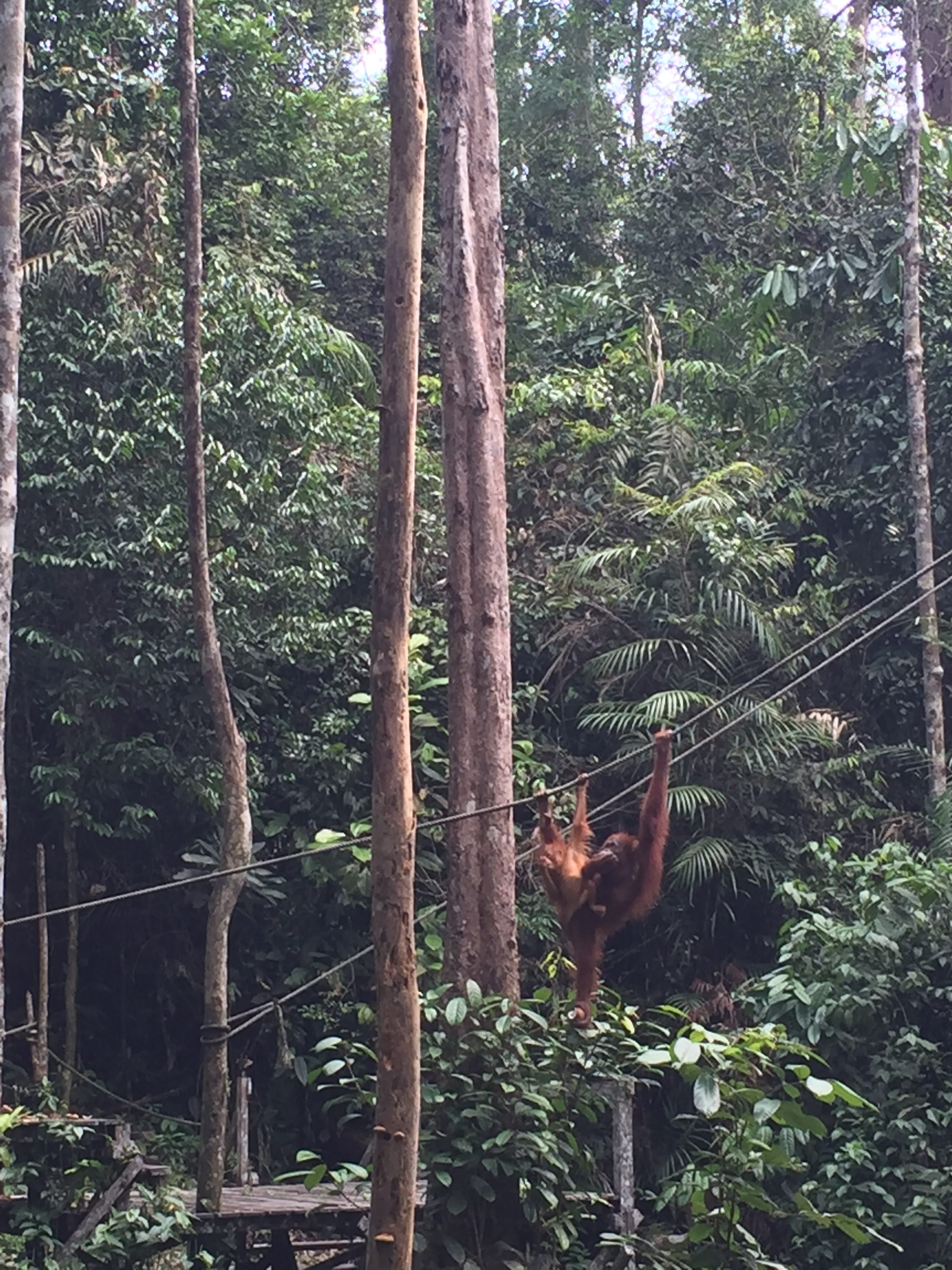“The least I can do is speak out for those who cannot speak for themselves” – Jane Goodall, primatologist, ethologist, anthropologist, and UN Messenger of Peace.
I am no animal expert or hardly the Jane Goodall of Malaysia, but I do believe that we need to learn about the natural flora and fauna. After releasing baby turtles from a hatchery last year, endangered animals have a special place in my heart . Since I was in Kuching, Sarawak, last weekend, I took the opportunity to visit Semenggoh Wildlife Centre where they run an orang utan rehabilitation programme. The orang utan too, is an endangered species in Malaysia, mainly due to logging, destruction of their natural habitat, or illegally kept as pets.
 Activewear is the best form of travel wear
Activewear is the best form of travel wear
The best time to visit them is during their feeding time (9am or 3pm). At this rehabilitation centre, they are free to roam yet they are not encouraged to come in close contact with humans. This is to ensure that the injured or orphaned orang utans are assimilated back into their natural habitat as soon as possible with minimized exposure to humans. Therefore they will only come out during their feeding time, and visitors can watch within a safe distance. They are still unpredictable wild animals, so the consequences are unimaginable if they run amok.
At exactly 3pm, we head to the feeding station. On the day that we visited, there were not many orang utan that showed up, because according to the guide it is now fruiting season so food are plenty in the jungle and they might already be full. However, we were lucky enough to witness a mother with its baby and another young juvenile. They seem to know that the daily feeding schedule is at 9am or 3pm!
 The feeding station. Mom with her baby, while a younger juvenile waits for his/her turn to take food to avoid confrontation.
The feeding station. Mom with her baby, while a younger juvenile waits for his/her turn to take food to avoid confrontation.
Orang utan might look cute with their orange fuzzy hair, big eyes, and limbering movement yet do not be deceived by their childish appeal. Orang utans are actually smart and strong creatures. Out of all the fruits that were presented by the guide, they chose coconuts. This is an interesting observation to me. Coconuts are not a part of their normal diet (coconut trees are not abundant in dense rainforest jungle). Without any tools, they figured out how to crack the coconuts open by smashing the shell against a hard surface like a tree trunk. This is also how the mother passed down skills required for its offspring to survive in the jungle.
I wonder will my children or grandchildren will ever be able to observe these interesting animals too in the future? If we do not continue to preserve the nature and treat it with respect, then the only animals that our future generation will be able to watch are kept behind bars in zoo or behind the screen in the television. I believe that with educational trips such as this, more people will learn to appreciate wild, endangered animals. In words of Jane Goodall,
“The greatest danger to our future is apathy”
Until next week,
The Weekend Runner.
For more info: http://www.sarawakforestry.com/htm/snp-nr-semenggoh.html


